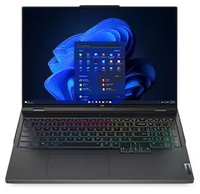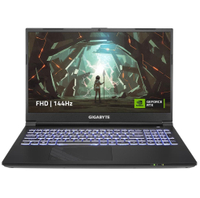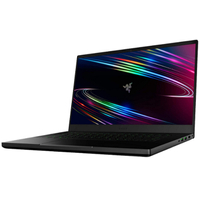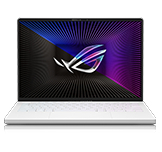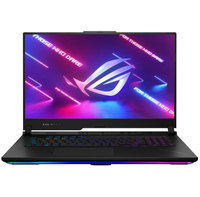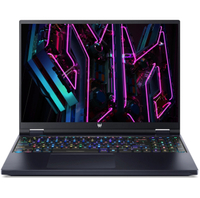The best gaming laptops in Australia for 2024
Don't compromise on power or portability with the best gaming laptops.
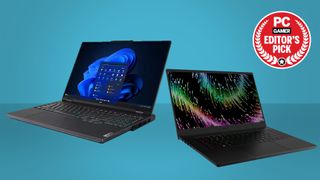
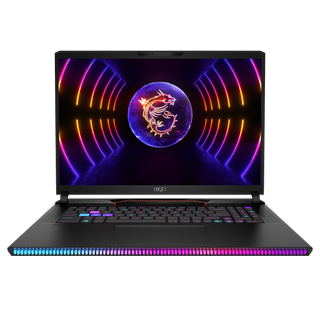
On the hunt for a gaming laptop bargain? Check out our regularly updated list of the best gaming laptop deals in Australia.
We've been testing the best gaming laptops, digging deep into the new flavors of AMD processor and Nvidia graphics silicon, and we know which notebooks sing and which are just tone deaf. We're not just talking about sleek, expensive new machines, either, we've picked a range of gaming laptops at different price point to highlight which give you the best bang for buck and which are just outright awesome.
And, honestly, you've decided to buy a gaming laptop at the right time. Not only have the next generation of mobile GPU and CPU been well established, offering the best Nvidia, AMD, and Intel has to offer, but this end of year period is offering some of the best prices on the top notebooks I've seen. I've already tested the alternatives, and the best gaming laptop is the Lenovo Legion Pro 7i. It makes the best RTX 4090 gaming laptops, including the Razer Blade 16 and Asus ROG Zephyrus M16, and even the frankly ridiculous MSI Titan GT77 HX, look like overkill.
AMD has also now released its new 3D V-cache mobile chip, and it's absolutely the best mobile gaming chip you can buy, which makes the 17-inch Asus ROG Strix Scar 17 X3D the outright fastest. It's a pricey beast, though, and a lot of money for just a handful of extra frames per second.
We test dozens of the best gaming laptops every year. The ones that make it to the list provide the best value for money—the best balance of performance, price, and portability.

Dave has had his head in PCs and gaming laptops for a couple of decades now, and knows what makes them tick, and what makes the best gaming laptop for every budget. Whether it's about looking for the highest performance, the best value, best screen, or just the best build quality, Dave has spent time prodding and tweaking pretty much all the laptops on this list.
The quick list
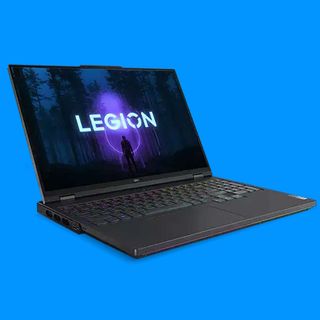
The best overall
The Lenovo Legion Pro is the best gaming laptop from all the new machines we've tested of this generation. It's also the best 16-inch notebook, too, which is our new favorite form factor, offering the best screens we've seen in modern laptops.
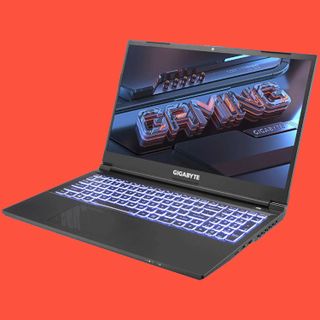
The best value
By simply dropping either the RTX 4060 or RTX 4050 into its last-gen chassis Gigabyte has created the most affordable, most powerful budget gaming laptop around. It's a great mix of value and gaming silicon.
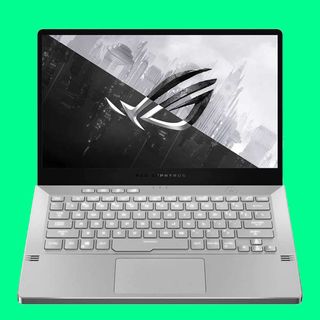
The best 14-inch
If a 15-inch machine is too big for your lap, then the G14 is the notebook for you. It's the best of the new breed of small screen gaming laptops thanks to its mix of the best of AMD and a generally more affordable price point than Razer's Blade 14.
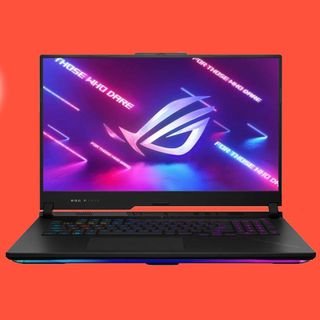
The best 17-inch
The big-boi Asus Scar 17 brings us the latest AMD mobile processor, which it turns out is also the best laptop CPU that you can buy today. Paired with the RTX 4090 and a 17-inch screen it's a beast.
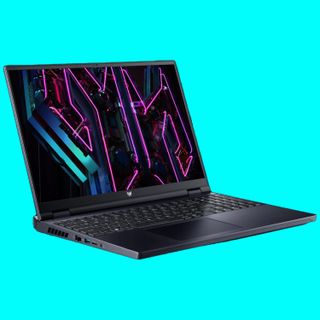
The best laptop screen
Not only is this laptop fitted with a 240Hz QHD+ panel, it's also utilised Mini LED technology to make it pop. Seriously, it's absolutely gorgeous, and the Acer's price tag isn't too egregious for the inclusion.
The best gaming laptop









Specifications
Reasons to buy
Reasons to avoid
Lenovo Legion Pro 7i (Gen 8)| Intel Core i9 13900HX | Nvidia RTX 4080 (150W) | 32GB DDR5 | 1TB NVMe SSD
The RTX 4080 model is our absolute favorite version of the Legion Pro 7i. That's the same one we've tested ourselves. This awesome chassis delivers enough headroom for the RTX 4080 to shine in games, and it often matches laptops with more restrained RTX 4090 GPUs inside. Tough to argue with that.
We tested: Intel Core i9 13900HX | Nvidia RTX 4080 (150W) | 32GB DDR5 | 1TB NVMe SSD
✅ You want serious gaming power: The RTX 4080 mobile GPU is a fantastic gaming chip, offering stellar performance on the native 1600p screen. And that Intel CPU is an absolute monster of processor, too.
✅ You value good value: Most of the next-gen laptops we've tested so far have had an almost punitive price premium attached to them, which makes them hard to justify. The Legion Pro 7i, however, can offer performance as high as a Razer Blade 16 with an RTX 4090 inside it, while coming in significantly cheaper.
✅ You want a grown-up laptop: The Lenovo chassis is smart, stylish, and doesn't come with any over-the-top 'gamer' aesthetic bull.
❌ You need looong battery life: The biggest downside with the Legion Pro 7i is its gaming battery life is one of the weakest we've seen. Given the high-powered GPU that's maybe not a surprise, and realistically you are going to gaming plugged in for the most part.
❌ You're after something super portable: The 16-inch chassis isn't that much bigger than a standard 15-inch machine thanks to the thin bezels around the screen, but they don't offer the same level of portability as the excellent 14-inch options around today.
🪛 The Legion Pro 7i is a stunning gaming laptop that really cements Lenovo's place in the top tier of gaming machines. The performance and value of the high-end components inside this laptop means it can rival far more expensive systems without sounding like a jet turbine to do so. It's both the best gaming laptop, and the best 16-inch laptop right now.
The Lenovo Legion Pro 7i is the best 16-inch gaming laptop, and since 16-inch is the best form factor for a gaming laptop, it is therefore the best gaming laptop overall as well.
It's a machine that comes in at a price point that makes the rest of the high-end RTX 40-series look even more ridiculous on their lofty $4,000+ perches. And its the RTX 4080 model that has us impressed in testing, offering the sort of gaming performance that has me questioning why anyone would want an RTX 4090 machine.
The Legion Pro 7i runs its RTX 4080 at a 150W TGP, which is the effective maximum of the GPU. Though manufacturers are given an extra 25W leeway to bulk up their own specs if they feel they can push a little extra juice through their own systems. Lenovo hasn't gone down that route, the Legion Pro knows what it likes, and it likes the 150W TGP and no more.
The Legion Pro 7i uses a 13th Gen Intel chip—the Core i9 13900HX. If, like me, you were to assume that would essentially be a slightly higher clocked version of the Core i9 13900H Asus has used in its excellent Zephyrus M16 gaming laptop, then you'd be wrong.
Despite the almost identical name, this is an entirely different, substantially better CPU. Where the one in the Asus is a 14-core design, with six P-cores, this is a 24-core setup with eight P-cores and twice the number of E-cores. They're both capable of 5.4GHz boost clocks, though inevitably the bigger chip has a higher base TDP of 45W.
Then, backing up the key CPU/GPU combination is a 1TB PCIe 4.0 Samsung SSD, and 32GB of DDR5-5600 SK Hynix memory.
The final part of the package is the 1600p 240Hz screen. Which is fine. I fear I've been spoiled by the joy of the mini LED backlights used in the last few laptop displays I've tested, because this one lacks the punch that I now want from a gaming panel. What it does have, however, is the 16:10 aspect ratio I never knew I needed in a gaming laptop until I started using them on the regular. The 2560 x 1600 native resolution is a great match for the 16-inch screen size the Legion Pro comes rocking.
The Legion Pro 7i manages to outperform both the Razer Blade 16 and the Asus Zephyrus M16 regularly, at both 1080p and 1440p resolutions. Only the chonky boi MSI Titan GT77 is able to utilise its RTX 4090-ish GPU to its fullest potential. And then at the expense of acoustics and potentially your sanity.
Because that's the thing I keep coming back to when I'm looking at this Lenovo machine. It's not the prettiest, but it sure can smash out them high gaming frame rates. And does it for around $2,000 less than the Blade 16.
So, it feels like a grown up gaming laptop, is eminently usable, has performance in spades—in both CPU and GPU terms—and doesn't cost anywhere near the same amount as the next-gen machines we've already checked out. I mean, it's not cheap; ~AU$5,000 is still a not inconsiderable chunk of change. But that's not an unexpected price tag for such a high powered notebook.
Read our full Lenovo Legion Pro 7i (Gen 8) review.
The best value gaming laptop






Specifications
Reasons to buy
Reasons to avoid
Our favorite config:
Gigabyte G5 (2023) | Intel Core i5 12500H | Nvidia RTX 4060 | 8GB DDR4-3200 | 512GB SSD
It's going to be tough to beat the Gigabyte G5 (2023) for the best affordable gaming laptop this year. It's smartly provisioned with an RTX 4060 and good on price. The 8GB of system memory is a bit miserly, but it is possible to upgrade the RAM with easy access to the insides of the G5 chassis.
We tested: Intel Core i5 12500H | Nvidia RTX 4060 | 16GB DDR4-3200 | 512GB NVMe SSD
✅ You want a cheaper RTX 40-series GPU: With a price tag not dissimilar to RTX 3060 gaming laptops, you're not paying a large premium for Nvidia's latest RTX 40-series architecture.
✅ You're after a laptop for both work and play: The G5 is predominantly a gaming laptop, but it's a relatively sleek chassis and its Alder Lake CPU does come with plenty of E-cores to throw at other tasks beyond gaming.
❌ You want to install a lot of games at once: With just a 512GB SSD installed out of the box, and the OS taking up some of that already, there's not a huge amount of room left for large game libraries.
❌ You want a quiet gaming device: Better stick to the Steam Deck or Asus ROG Ally if you want something quieter. The G5 makes a helluva noise when it's gaming.
🪛 You might reasonably assume that a next-gen gaming laptop will cost considerably more than the previous generation, but the Gigabyte G5 (2023) is basically the exact same machine as last year, at a bargain price, just with a new RTX 40-series GPU parachuted in. And that works for us.
The Gigabyte G5 (2023) is a great deal, and that's a little surprising considering the price hike we usually see for brand new gaming laptops. But you'll find no fad features or unnecessary add-ons to push up the costs here. Just a straightforward, well-built, and cleverly provisioned gaming laptop for around AU$2,000 that delivers plenty of frames in games.
Let's start with the star of the show here: the RTX 4060. We're yet to see Nvidia's RTX 40-series drop to this level on desktop, but even this budget-friendly card delivers superb 1080p performance befitting the G5's 1080p 144Hz display. That's partially down to the power Gigabyte's prepared to pump into the GPU inside this machine: 75W.
That might not seem like much next to the 175W RTX 4090 laptops we've reviewed this year, but it's 30W more than MSI is ready to run through its own RTX 4060-powered gaming laptop, the Cyborg 15(opens in new tab). And you can watch the frame rate go up with every extra watt pulsing through the G5's GPU. The Gigabyte G5 is up to 27% faster than the Cyborg 15 in our testing, and the Cyborg 15 even has a better CPU for gaming under the hood.
The CPU in question here is Intel's Core i5 12500H. A fairly sensible choice, though let down a little by only four Performance-cores (P-cores). This is one of Intel's hybrid Alder Lake chips, so it comes with a basket of Efficient-cores (E-cores) to help lighten the load on the quicker gaming silicon. There are eight E-cores here, which makes for a 12-core chip in total.
Generally, I'd prefer a few more P-cores in the mix, at least six. Like the Core i7 12650H CPU found on the MSI Cyborg 15, in fact. That comes with six P-cores and just four E-cores. The MSI laptop also comes with faster DDR5 memory than the legacy DDR4 on the Gigabyte machine. But as you can see in the benchmarking results, the actual difference in performance between these two is relatively small even in CPU-heavy applications and tests.
You can open this laptop up relatively easily with a Phillips-head screwdriver to access its innards. You will poke through a couple of stickers over the screws that might void your warranty, so be sure you want to be diving in there before you do, but behind the back panel you'll find one free M.2 SSD slot for an easy storage capacity upgrade. You'll probably want to take advantage of that eventually as the 512GB SSD included in this machine will fill up quickly.
The biggest drawback of the G5 is the noise this thing makes when it's running any marginally demanding game. That's not a new experience for anyone who has used a gaming laptop in the past, but take this as your warning that gaming laptops are generally not any quieter in 2023. Not if you want high performance anyways. The MSI Cyborg 15 I also tested this past week is only quieter owing to its significantly reduced performance.
There's plenty of good things to say about the screen on the G5, too. It's vibrant and responsive, and while 15.6-inches can feel a little encroaching at 1080p, it's a happy median for frame rate, resolution, and size. While this laptop does suffer a little in contrast, colours are nicely saturated and it's an all-round solid panel.
The G5 (2023) just feels such a solid design for a gaming laptop. The performance is there, the flexibility and upgradeability too, and you aren't paying over the odds for the hot new thing. It's actually pretty affordable. This is going to be tough to beat for the best affordable gaming laptop to buy right now.
Read our full Gigabyte G5 (2023) review.
The best 15-inch gaming laptop





Specifications
Reasons to buy
Reasons to avoid
Our favorite config:
Razer Blade 15 | Intel Core i7 12800H | Nvidia RTX 3070 Ti
You can, of course, go for the big boi—the RTX 3080 Ti—but in this slimline chassis, the Nvidia RTX 3070 Ti will deliver fantastic frame rates, even at the 1440p resolution of the 240Hz screen. You also get a 1TB PCIe 4.0 NVMe SSD and 16GB of dual-channel DDR5 RAM at a blistering 4,800MHz.
We tested: Intel Core i7 10875HX | Nvidia RTX 2080 Super | 16GB DDR4 | 1TB NVMe SSD
✅ You want a premium build: Razer's Blade 15 is as close as you're going to get to a gaming MacBook aesthetic. Well, apart from that big green logo on the lid...
✅ You want options: There are a huge number of Blade 15 configurations out there, going from the Base to the Advanced systems, with a variety of price points.
✅ You want battery life: If we're honest, game time away from a plug is always limited in a modern gaming laptop. But the Blade 15, even with the RTX 3080 in it, is the best performing on that front of all the machines in this list.
❌ You need peak plugged-in performance: That slimline chassis is an essential part of the Blade 15's charm but is also why Razer limits the TGP of the graphics cards in them.
❌ You're on a budget: Razer's gaming laptops are not cheap, and always come with a price premium on top of the likes of Asus or Acer's more affordable machines.
🪛 The Razer Blade 15 has long been our favorite 15-inch gaming laptop. It mixes style with performance and a wealth of screen real estate, and comes in a wide variety of configurations. Now, those configs may not necessarily suit every budget because of the Razer price premium, but if you're willing to pay for the absolute best the Blade 15 deserves to be at the top of your list.
The latest spin of the Razer Blade 15 once again improves on one of the best gaming laptops ever made. It has the same gorgeous CNC-milled aluminum chassis as its predecessor, only this time it can house one of Nvidia's latest RTX 40-series GPUs and an Intel 13th Gen Core i9 CPU.
When we played with the Razer Blade 15 Advanced with a 10th Gen Intel chip and RTX 3080 (95W) GPU inside it. And we fell in love all over again. The chassis hasn't changed since then, it just now ships with even more powerful components. We've also since then tried out the larger Razer Blade 17 with an RTX 3080 Ti humming away inside it, alongside one of those tasty 12th Gen chips and still stand bewildered by what will fit inside such a compact and neat chassis.
That said, you will get some throttling because of that slimline design, and even on the larger Blade 17 the battery life can be a little slim, but you're still getting outstanding performance from a beautiful machine.
The Blade 15 isn't the lightest gaming laptop you can buy, but five pounds is still way better than plenty of traditional gaming laptops, while also offering similar performance and specs. That heft helps make it feel solid too. It also means the Blade 15 travels well in your backpack. An excellent choice for the gamer on the go... or if you don't have the real estate for a full-blown gaming desktop and monitor.
Keyboard snobs will be happy to see a larger shift and half-height arrow keys. The Blade 15 Advanced offers per-key RGB lighting over the Base Model's zonal lighting. Typing feels great, and I've always liked the feel of the Blade's keycaps. The trackpad can be frustrating at times, but you're going to want to use a mouse with this gorgeous machine anyway, so it's not the end of the world.
One of the best things about the Blade 15 is the number of configurations Razer offers. From the RTX 3060 Base Edition to the RTX 4070 Advanced with a 240Hz QHD panel, there's something for almost everyone. It's one of the most beautiful gaming laptops around and still one of the most powerful.
Read our full Razer Blade 15 Advanced Edition review.
The best 14-inch gaming laptop






Specifications
Reasons to buy
Reasons to avoid
Our favorite config:
Asus ROG Zephyrus G14 (GA402RJ) | AMD Ryzen 9 6900HS | AMD RX 6700S
This is the less powerful version of the G14 than the one we reviewed, but all the better off for it. The CPU remains the same powerful octa-core AMD number, but the GPU and RAM have come down to a more modest spec, which makes the impressive G14 an affordable yet still powerful gaming machine.
We tested: AMD Ryzen 9 6900HS | AMD Radeon RX 6800S | 16GB DDR5 | 1TB NVMe SSD
✅ You want a compact machine: The smaller 14-inch scale of the Asus G14 makes it a great compromise between the office ultrabook and a big gaming laptop.
✅ You're price-conscious: There are fantastic configurations of the G14 that come in as reasonably priced as any other laptop of the same spec and yet with all the style and quality of Asus' diminutive machine.
✅ You're an AMD fan: There are more options for AMD fans than ever before, but still Nvidia and Intel dominate the market. Asus G14, however, remains one of the few that can offer both AMD CPUs and GPUs.
❌ You need a big screen: The 14-inch panel may not suit some users, though you can get high-res options such as the 120Hz 1600p screen we've tested.
❌ You want battery life: One of the weakest points of AMD's notebooks is their performance away from a plug socket. The G14 then posts one of the weakest results of all the machines on test.
🪛 Asus' Zephyrus G14 is deservedly one of the best gaming laptops around today. The smaller scale of 14-inch machines makes them a delight if you're looking to travel with your laptop, and you can still fit them out with high-res screens, too. The battery life is a concern, however, but their relative affordability and general gaming performance makes them well worth a look.
The new version of the Zephyrus G14 for 2022 impresses us once again with its well-balanced spec and excellent gaming performance. Seriously, this thing shreds through frames up to its 120Hz refresh rate, and it's great for much more than gaming, too.
We checked out the version with AMD's RX 6800S under the hood, though there is an option for an RX 6700S, for a chunk less cash. Arguably, that cheaper option sounds a bit better to us, as the high-end one can get a little pricey and close in on the expensive but excellent Razer Blade 14. It's not helped much by its 32GB of DDR5-4800 RAM in that regard, though we do love having all that speedy memory raring to go for whatever you can throw at it.
At its heart is the AMD Ryzen 6900HS. That's one of the top chips from AMD's Ryzen 6000-series, but not its best and brightest—though you're really fighting over boost clocks and not much else when it comes to the tippy top of the red team's mobile processors anyways. It delivers eight cores and 16 threads of the Zen 3+ architecture, capable of boosting to 4.9GHz (which it actually does on occasion), so that's more than acceptable by me.
That GPU and CPU combo makes quick work of our benchmarking suite, however, and I have to say I'm heartily impressed with the G14's gaming performance overall. That's even without turning to the more aggressive Turbo preset—I tested everything with the standard Performance mode. It's able to top the framerate of RTX 3080 and RTX 3070 mobile chips pretty much across the board, and while it does slip below the RTX 3080 Ti in the Razer Blade 17, that's a much larger laptop with a much larger price tag.
One of my favorite things about the G14 is in the name—it's a 14-inch laptop. The blend of screen real estate and compact size is a great in-between of bulkier 15- and 17-inch designs, and not quite as compromised as a 13-inch model can feel. But the big thing with the 2022 model is that the 14-inch size has been fitted out with a larger 16:10 aspect ratio than previous models' 16:9 panels.
When it's running smoothly, the G14's high refresh and high-resolution panel also looks fantastic. Being such a bright and colorful IPS display on this model, you really get to soak in every detail.
One of the downsides with this machine is the battery life, which really isn't the best while gaming—less than an hour while actually playing. You'll get more when playing videos or doing something boring like working, but we do expect a bit more from a modern laptop. It's not a deal-breaker, but definitely something you'll want to bear in mind.
The G14 has lost that quality of being surprisingly cheap for what you get, too, even if you do get stellar performance out of it.
Perhaps one reason for that is the inclusion of 32GB of DDR5 RAM—16GB of that is soldered to the board, and the other 16GB attached via removable SO-DIMM from the underside of the laptop. That's not cheap memory. DDR5 prices have hardly settled down since the memory standard was introduced last year, and 32GB is a bounty of high-performance memory by comparison to most gaming PCs today.
Overall, though, the G14 experience is a pretty easy and straightforward one. I didn't run into any major issues with it over the couple of weeks I've had it, and for the few negatives I have with the design, Asus has offset them with heaps of positives. The cheaper models may be a better bet than the one we reviewed, however. The same chassis and great design but with a slightly more amicable price tag.
Read our full Asus ROG Zephyrus G14 2022 (GA402RK) review.
The best 17-inch gaming laptop









Specifications
Reasons to buy
Reasons to avoid
Our favorite config:
Asus ROG Strix Scar 17 (2023) | AMD Ryzen 9 7945HX | Nvidia RTX 4090 | 32GB DDR5-4800 | 1TB SSD
The Scar 17 is one of the fastest, most powerful gaming laptops I've ever tested. And if that's all you care about this is the machine for you. For me, the ergonomics make it feel like a second-tier system despite the fact it can outperform far more expensive gaming laptops. Asus giveth, and Asus taketh away.
We tested: AMD Ryzen 9 7945HX | Nvidia RTX 4090 | 32GB DDR5-4800 | 1TB SSD
✅ You want the most powerful gaming laptop: The combination of AMD's latest Ryzen mobile chip and Nvidia's RTX 4090 makes this a real frame rate spitting monster of machine.
✅ You want a desktop replacement: The large 17-inch screen and 1440p resolution gives you a lot of space to work on without taking up the same space as a full desktop+monitor setup.
❌ You want good battery life: at just 55 minutes in gaming terms, the battery life is among the worst I've ever tested.
❌ Ergonomics is key to you: the typing experience isn't great with such a defined chassis edge that digs into your forearms, and the trackpad is horrible.
❌ You like a quiet life: it gets LOUD.
🪛 The Asus ROG Strix Scar 17 uses AMD's latest Dragon Range CPU, and it knocks even the most powerful Intel laptop chips off the top perch. Combined with the RTX 4090 that makes this a combination for gaming and productivity that's hard to beat at this price.
AMD's new range of Zen 4 mobile chips are the finest number crunchers you'll find in a gaming laptop. That makes this Asus ROG Strix Scar 17 one of the most powerful gaming laptops I've ever tested. But some of the shine has been taken off because I can't shake the feeling AMD machines still seem to be tier-two in the eyes of their makers.
Which is a shame because this is a really impressive gaming laptop that makes the ridiculous MSI Titan look even more dumb. The Asus is near $2,000 cheaper and outperforms it in practically every metric that matters.
This is the most affordable RTX 4090 machine I've seen in this generation, so I guess in some regards being a seen as a lesser light in laptops terms has maybe served this AMD-powered system after all. It's also one of the best performing RTX 4090 machines I've seen, which is a double whammy that makes it difficult to recommend any of the rest.
You absolutely do need to be plugging it in because, despite that 90Wh battery, it really doesn't last long away from a wall socket. If you're gaming, consider the battery like some sort of uninterruptible power supply rather than something to rely on for long.
The key spec, as always in a gaming notebook, is that of the CPU/GPU combo. We've already spoken in great length about the mobile RTX 4090, decrying its misnaming as an RTX 4080 in a thin disguise, but the mobile AMD CPU is the big new thing here.
It's AMD's latest Zen 4 architecture brought into the laptop realm and it's pretty damned special, hosing the competing Intel 13th Gen chips used in comparative systems. Sometimes by a long way. It's a 16-core, 32-thread processing monster that so far hasn't burned up inside the confines of this surprisingly slight chassis.
The nominal clock speed of the chip is just 2.5GHz, with a boost clock of 5.4GHz. And that's actually a reliable boost, too, because I was reliably seeing the chip ramping up to that level during single-core loads in my testing. In heavily multithreaded loads I was seeing a regular 4.7GHz, which is no mean feat. I repeat, we are talking about 16 full Zen 4 CPU cores here.
The most powerful Intel mobile chip we've seen has been the Core i9 13980HX in the Asus Strix Scar 16, this machine's smaller sibling. That's a 24-core processor with 32-threads, but remember Intel is mixing eight of its Performance cores with 16 Efficient cores to hit its thread target. And that shows in the CPU benchmarks.
I keep coming back to my irredeemably negative experience of using the MSI Titan machine. That's an offensively chonky, loud machine that still only just delivers the sort of performance this Asus Scar 17 can. And that means as much as the ergonomics of this big boi ROG laptop don't sing to me, the raw performance absolutely does.
It's also my first taste of AMD's new range of laptop processors, and it's certainly pleasing my techie palate. The red team is really nailing mobile chips at the moment, with the power of this Ryzen 9 7945HX and the efficiency and performance of its Z1 Extreme, née Ryzen 7 7840U, that is gracing the excellent ROG Ally handheld gaming PC.
Read our full Asus ROG Strix Scar 17 (2023) review.
The best gaming laptop screen





Specifications
Reasons to buy
Reasons to avoid
Our favorite config:
Acer Predator Helios 16 | RTX 4080 | Core i9 13900HX | 16GB DDR5-5600 | 1TB SSD | Mini LED
Considering this laptop is quite a bit cheaper than its RTX 4080 competition, it doesn't feel that pared back for it. In fact, this laptop has one of the most gorgeous screens we've seen on a mobile device yet, powered by Mini LED. Its performance is a little off the pace of the rest of the pack, but it's still a high-end laptop that can deliver immense frame rates.
We tested: Intel Core i9 13900HX | Nvidia RTX 4080 | 16GB DDR5 | 1TB NVMe SSD
✅ You value a gorgeous screen: The Acer Predator's Mini LED screen is stunning. This new panel technology really works wonders on a smaller laptop screen.
✅ You want a large laptop: The 16-inch form factor is a fantastic mix of screen and size.
❌ You need top performance: This isn't the fastest RTX 4080 laptop we've tested, though it's not too far off the pace.
❌ You need a portable laptop: While this 16-inch laptop is fairly compact considering its screen size, it's still very large, heavy, and comes with a huge power brick.
🪛 The Mini LED screen on this laptop is absolutely stunning. It's bright when it needs to be, but black levels are great and you can pick out finer details in the murkiest of images. The foibles of Mini LED aren't as pronounced in such a small screen as this, either. While you will find this screen on the likes of the Asus ROG Zephyrus M16, this Acer laptop is usually far cheaper.
The Acer Predator Helios 16 isn't the fastest gaming laptop with an Nvidia GeForce RTX 4080 stuffed inside it, but it does have many redeeming qualities. You should absolutely look elsewhere if you want pure performance, but for the raw quality of the Mini LED screen on this laptop and its comparatively affordable price tag, there's something to really like here.
Let's talk about the screen, then. It's one of the Helios 16's strongest features. It's a Mini LED panel with 1000 zones, and those zones are delivered by miniature LEDs packed together behind the screen, rather than your more traditional diodes. The extra zones aim to produce brighter peaks without washing out the darker areas of a picture. Admittedly, Mini LED is no microLED, but over a traditional LED screen I'll take it any day.
The screen on the Helios 16 looks lush. The colours are rich, vibrant, and it doesn't struggle to deliver a punchy image like some cheaper laptops. Crank the brightness right the way up and the image is super impressive, both on the desktop and in games.
I've been playing some Metro Exodus Enhanced Edition and this display is so, so good at showing off areas with bright flames erupting out of the darkness, or rays of light breaking through windows or a hole in the roof.
This laptop's Mini LED screen really is a highlight—an enviable 240Hz and 16:10 (2560 x 1600) design.
But does it make up for the performance deficit I'm sometimes seeing? That's tough, because the Helios can hold its own simply due to its overpowered components. The RTX 4080 and Intel Core i9 13900HX are a mighty combo, but game performance is a bit of a mixed bag versus other gaming laptops with similar spec sheets.
The overall chassis construction is a sleek black design. It's a little plasticky, but it can be forgiven for a generally pretty smart look. It falls a little short of the Razer Blade 16's professional-looking shell, and it's not quite as flashy as the Strix Scar 16, but with plenty of ports my first impression out of the box was certainly a good one.
The power brick isn't my favourite, however. It's pretty massive, weighs a lot, and I wouldn't want to lug it around in my backpack all day alongside this already 2.9kg machine.
But, for the money, it's much easier to look past the performance of the Helios and instead at the larger package. The silicon is there, the quality is there, and the screen is 100% there.
Read our full Acer Predator Helios 16 review.
How we test gaming laptops
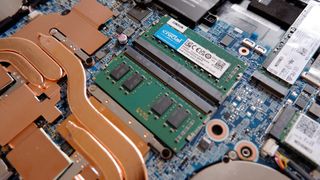
We dedicate a lot of time to our gaming laptop testing to ensure that we're capturing all the objective performance data we need, and that we have the opportunity to catalogue the subjective experience of actually using a given device. Gaming laptops are expensive items, and you're right to do your research before buying, so we're passionate about making sure we're able to tell you what a notebook is like to use as well as how powerful it is.
The objective side demands that we put each system through our standard benchmarking suite. That allows us to confidently compare systems on directly referential basis. We test the raw performance of the CPU, GPU, and storage components of a system using the Cinebench R23 and Blender 3.3.0 benchmarks to get a bead on the processor and graphics card rendering performance. We also use X264 to test the encoding power of a laptop CPU.
3DMark's Storage test and the Final Fantasy XIV Endwalker benchmarks are a great way to highlight the gaming performance of a laptop's storage subsystem. And 3DMark also gives us a way to get a synthetic read on both the gaming and ray tracing performance of a GPU.
We also put a system through gaming performance tests of Cyberpunk 2077, F1 22, Hitman 3, Horizon Zero Dawn, and Metro Exodus Enhanced, at both 1080p—so we have a base reference score no matter what a system's native resolution is—and at 1440p and 4K where that is available.
We also run some experiential tests on a system's panel—we use Lagom's LCD test images to help discern things like black levels and white saturation as well as general desktop and gaming testing to see how it feels to use a laptop's screen.
It's also important to check the actual gaming frequency of both a laptop's GPU and CPU, to see how a given slice of silicon performs given the thermal constraints of different notebook chassis.
We then use PCMark 10's gaming battery life test to give us a comparative battery life metric.
Personally I also like to always write a review of a given laptop on the machine itself. That gives you a good feel about both the trackpad and keyboard, as well as the ergonomics of the chassis' design, too.
We then bring all of that subjective and objective data together alongside the price to decide how well each machine we test stands up against all the other gaming laptops we've looked at in our combined decades of PC hardware testing.
Best gaming laptop FAQ
PC Gamer's got your back
How do we test gaming laptops?
Every gaming laptop here is one that we have personally tested. That means writing on them, browsing on them, watching video, and most importantly gaming on them. That experiential take on how good a machine is to actually use is vital when it comes to making recommendations on the best gaming laptop.
But we also run a full suite of benchmarks, ranging from synthetic CPU tests, rendering tests, memory bandwidth tests, thermal testing, and of course gaming benchmarks.
To get a holistic view of how good an actual gaming laptop is, it's this mix of the subjective experiential view and the objective benchmarks that give us our final list of the top notebooks for gaming.
What's the most important gaming laptop component?
When it comes to gaming, the obvious answer is the graphics card, but that's where things have gotten a little more complicated recently. With GPU performance now so dependent on cooling, you have to pay attention to what wattage a graphics card is limited to and what chassis it's squeezed into.
As we said at the top, an RTX 3080 confined in an 18mm chassis will perform markedly slower than one in a far chunkier case with room for higher performance cooling.
Which gaming laptop brand is best?
For our money it's a toss-up between the Razer and Asus machines for top gaming laptop honors. The Blade series from Razer are clean-cut, stylish notebooks that have a matte black gaming MacBook aesthetic that we really dig. And Asus is a brand that knows how to do all the important hardware stuff; can deliver on style and technological substance, but can also offer better value than the more premium-focused Razer laptops.
Should I worry about what the CPU in a gaming laptop is?
That really depends on what you want to do with your laptop. An 8-core, 16-thread AMD Ryzen chip will allow you to do a whole load of productivity on the road, but honestly, it will have little benefit in gaming. That's one of the reasons Intel has launched its Tiger Lake H35 chips; they're quad-core, 8-thread CPUs, but they're clocked high to deliver high-end gaming performance when paired with something like the RTX 3070.
What screen size is best for a gaming laptop?
This will arguably have the most immediate impact on your choice of the build. Picking the size of your screen basically dictates the size of your laptop. A 13-inch machine will be a thin-and-light ultrabook, while a 17-inch panel almost guarantees workstation stuff. At 15-inches, you're looking at the most common size of the gaming laptop screen.
Are high refresh rate panels worth it for laptops?
We love high refresh rate screens here, and while you cannot guarantee your RTX 3060 will deliver 300 fps in the latest games, you'll still see a benefit in general look and feel running a 300Hz display.
Should I get a 4K screen in my laptop?
Nah. 4K gaming laptops are overkill; they're fine for video editing if you're dealing with 4K content, but it's not the optimal choice for games. The standard 1080p resolution means that the generally slower mobile GPUs are all but guaranteed high frame rates, while companies are slowly drip-feeding 1440p panels into their laptop ranges.
A 1440p screen offers the perfect compromise between high resolution and decent gaming performance. At the same time, a 4K notebook will overstress your GPU and tax your eyeballs as you squint at your 15-inch display.
The biggest gaming news, reviews and hardware deals
Keep up to date with the most important stories and the best deals, as picked by the PC Gamer team.

Dave has been gaming since the days of Zaxxon and Lady Bug on the Colecovision, and code books for the Commodore Vic 20 (Death Race 2000!). He built his first gaming PC at the tender age of 16, and finally finished bug-fixing the Cyrix-based system around a year later. When he dropped it out of the window. He first started writing for Official PlayStation Magazine and Xbox World many decades ago, then moved onto PC Format full-time, then PC Gamer, TechRadar, and T3 among others. Now he's back, writing about the nightmarish graphics card market, CPUs with more cores than sense, gaming laptops hotter than the sun, and SSDs more capacious than a Cybertruck.
- Jorge JimenezHardware writer, Human Pop-Tart
- Jacob RidleySenior Hardware Editor
- Alan Dexter
- Shaun Prescott
Most Popular



